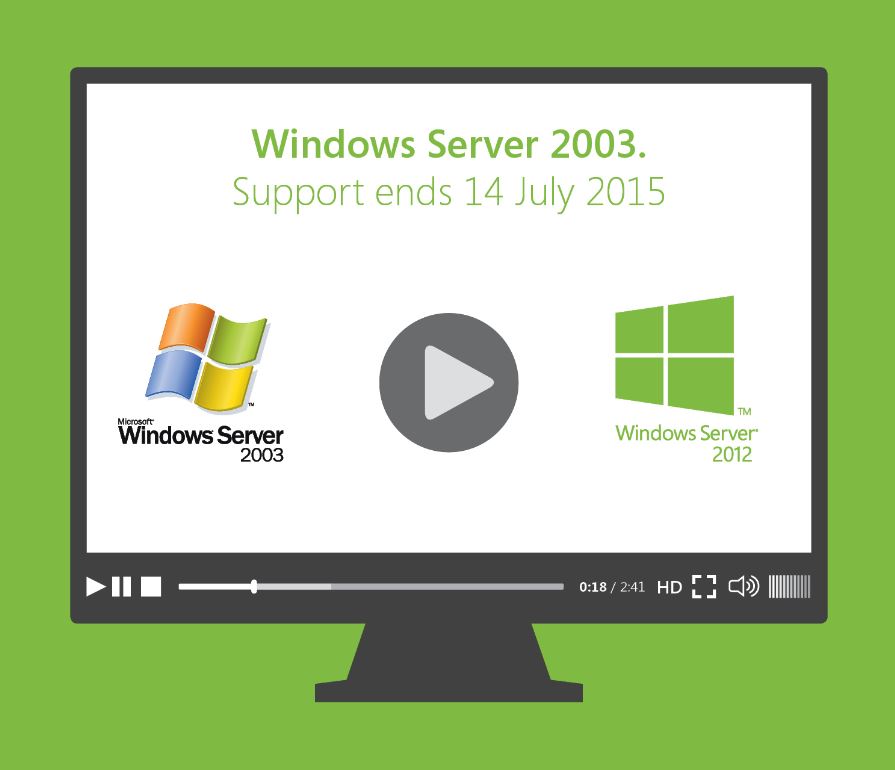Windows Server 2003 support comes to an end, opens up new opportunities for SMEs
By Dele Akinsade, Server and Tools Business Group Lead for Sub-Saharan Africa
It has been over ten years since Microsoft launched Windows Server 2003, and it’s been a decade of significant change. SMEs now have capabilities previously reserved for only large enterprises, thanks to cheaper hardware, smaller devices and cloud solutions. The way we work has also changed with the growth of mobile. And yet despite this, many companies are still using outdated technology.
With this in mind, Microsoft is completely ending our support for Windows Server 2003 and Windows Server 2003 R2 on the 14th of July 2015, following the end of mainstream support in July 2010. This is part of our support lifecycle in place to encourage our users to migrate to one of our latest solutions and take advantage of modern technology for compliance, hybrid cloud infrastructure and innovative applications.
So, what does the end of support for Windows Server 2003 mean?
After the 14th of July, Microsoft will no longer develop or release any updates, which can increase security risk, result in slower performance and cause potential down time of business applications. The costs of maintaining your legacy servers can also add up quickly, while your business will likely fail to meet most industry-wide compliance standards and regulations, which increases the risk for your daily business transactions.
There’s no need to panic, though – because with change comes opportunity . Many companies who have migrated are already reaping the benefits of the new operating system. “With Windows Server 2012 R2, we can ensure the integrity and modernity of our IT infrstructure; it protects our operations and our customers’ data, and it also gives our infrastructure the ability to evolve, thus ensuring our competitiveness and making sure we benefit fully from the advantages of the cloud”, says Misa Ratovaoarison, IT Manager at Filatex, a Malagasy group specialised in real estate.
Apart from ensuring that your servers remain protected with continued security updates and patches, migrating from Windows Server 2003 could signal the beginning of a new stage for your business, giving you new capabilities no matter how big or small your operations are. A cloud platform like Azure, for example, provides you with a range of benefits, including increased backup capacity, enhanced disaster recovery capabilities, consistent compliance with regulatory demands and access to the most modern applications. In addition, it reduces server sprawl and boosts employee productivity by allowing them to work from wherever they are. All these features can help your business move faster, reduce costs and ultimately be more productive.
Compliance with key industry regulations and standards is a key reason many of customers have taken their migration from Windows Server 2003 seriously. Yan Ng, executive director at Intercontinental Trust Limited (ITL), a leading Management Company operating in the global business sector in Mauritius, says “It is also important to highlight that this implementation is compliant with our ISAE 3402 Type II certification”.
The path to migration
Of course, as you begin the migration process, you need to ask yourself what solution makes the most sense for your business. You have a few months before Windows Server 2003 support ends, so take a moment and use one of our tools to discover what applications and software you have running on the outdated technology. Then create a transition plan to make your migration process as smooth as possible, and choose where you would like to move your current workloads and applications – whether to a new server like Windows Server 2012 (R2) or to a cloud platform like Microsoft Azure. Finally, there are several vendors that offer do-it-yourself tools to assist with the migration, such as Dell ChangeBASE, Citrix AppDNA, AppZero, Refresh IT, BlueStripe and Microsoft Services JumpStart for Windows Server 2003.
We are pleased to say that our partners support our move away from Windows Server 2003, understanding the importance of making use of the latest technology. Hasmukh Chudasama, Practice Lead – End User Computing at Dimension Data East Africa, comments: “By helping our mutual customers make the transition, Dimension Data is opening the doors for them to protect their environments, use virtualisation to reduce server sprawl, take advantage of hybrid and public cloud options for their application and reduce IT burden with Office 365 and other services.”
Thanks to new technology, it’s an exciting time for SMEs. That’s because many are finding that increased access to new technology—such as cloud and mobile solutions—can provide access to services that were never within their reach before, helping them grow and be more productive.
So if you have been using Windows Server 2003 and haven’t yet begun migration planning, now is the time. We have a range of options to suit your needs, including the new Windows Server, Microsoft Azure, Office 365 and other hosting partners. For advice and assistance, we also have tools and guidance available to help you during the migration process, and our partners are there to assist you along the way.
